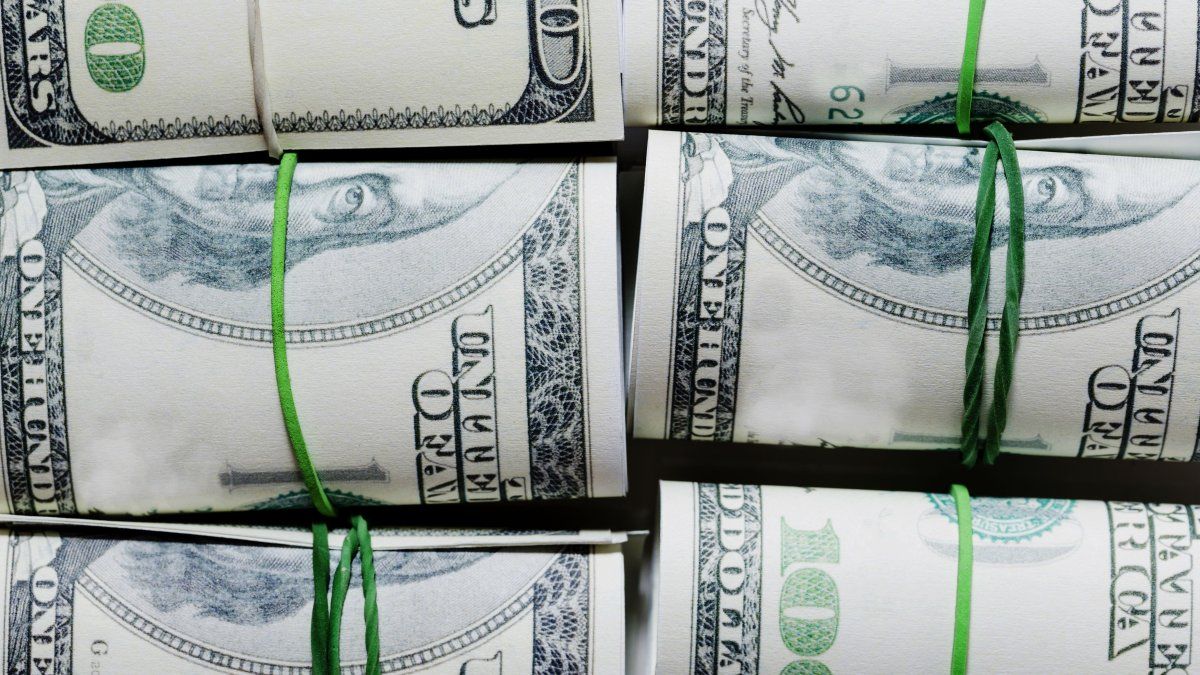He Blue dollar recorded its biggest daily drop in a month and a half This Thursday, broke through $1,300 and began to operate below the “contado con liqui” (CCL) rate. In this framework, Scope spoke with specialists to investigate the main factors that explain this downward trend that the currency has been experiencing.
According to a survey by this media, the informal dollar fell $40 (-3.1%)which means the biggest decline since July 15when the quotations of all the exchange rates parallel to the official collapsed as a consequence of the announcement that the Central Bank (BCRA) was going to begin to intervene in the stock market to reduce the gap, although the Government claims that this is an action aimed at absorbing the pesos in circulation.
In this way, the blue reached $1,265 and the gap with the wholesaler, regulated by the BCRA, fell to 32.4%, the lowest level since May 17 and very similar to that observed in February.
Blue dollar: the causes of the collapse
For the economist Gustavo Berthis decrease is mainly due to the “money laundering, tax obligations, moratorium and current needs for pesos”.
Along the same lines, Nicholas MartinezResearch at Wise Capital, pointed to “potential success of laundering” as the most important factor since “increases the virtuous cycle of making the peso strong and the dollar weakgenerating a supply shock, with demand currently restricted by the clamp.”
With a somewhat different view, the financial analyst Christian Buteler said that “those who launder money do not have to sell their dollars”“Most likely, they will deposit them so that the money laundering will come out at zero. There may be some selling to pay the fine by those who do not want to have their currency deposited, but I do not think it is significant,” he added.
The specialist was struck by this decline in the blue, since “the market was flat.” In this context, he dared to predict that “Perhaps in the wholesale segment there were some operations that ended up causing the price to fall circumstantially.“.
Blue dollar: the intervention of the BCRA in the CCL and the reduction of the PAIS Tax also influence
Buteler also recalled that the collapse of the blue replicates the dynamics that the CCL dollar and the MEP have been having, within the framework of the intervention of the monetary authority and one Greater weakness of the US currency globally. According to the institution led by Santiago Bausili, in the second half of July, 100,000 people were used US$326 million of reserves were required to “step on” the CCL, and it is estimated that in August that figure was similar.
It is also worth noting that as of this week the reduction to 7.5% of the PAIS tax for imports. The Government is seeking to ensure that this measure has an impact on the process of decelerating inflation through the lower cost of products from abroad.
This could reduce demand for the blue dollaras long as companies have the dollars to import, a fact that is tied to the possibility of obtaining dollars from money laundering, the RIGI, contributions from international organizations or from some investment fund.
Despite all the elements mentioned that can bring calm to the exchange markets, Wise Capital sees some warning signs that can interrupt this process, mainly linked to the dynamics of reserves.
“The process of narrowing the gap deteriorates the BCRA’s purchase of foreign currency. As the market validates this phenomenon, we will be approaching a dollar of $1,200 again.“The accumulation of net reserves is an uncertainty at the moment, but the rise in gross reserves is a fact and generates a certain security and tranquility for the market,” said Martínez in this regard.
Source: Ambito
I am Pierce Boyd, a driven and ambitious professional working in the news industry. I have been writing for 24 Hours Worlds for over five years, specializing in sports section coverage. During my tenure at the publication, I have built an impressive portfolio of articles that has earned me a reputation as an experienced journalist and content creator.




